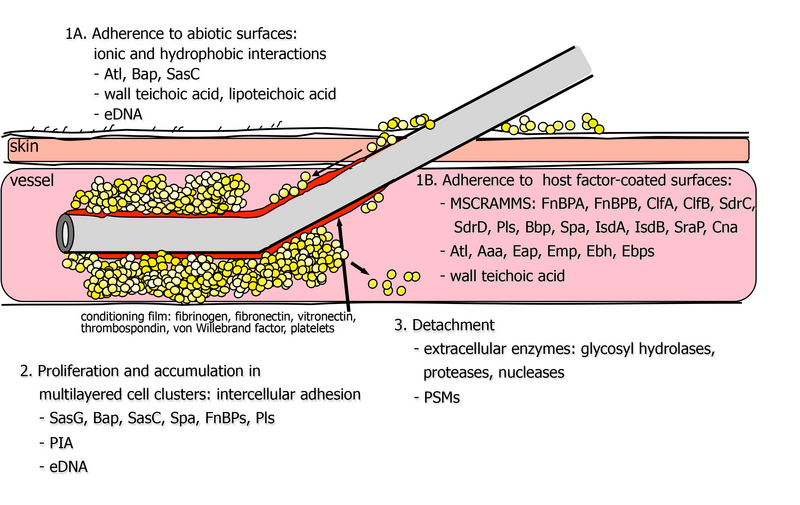Molecular microbiology

©Springer Science+Business Media B.V.2011
Staphylococci are among the most common infectious agents in humans. Staphylococcus aureus causes a variety of infections, from more harmless wound and soft tissue infections to life-threatening infections such as infective endocarditis and sepsis. The coagulase-negative species Staphylococcus epidermidis and Staphylococcus lugdunensis have also become increasingly important as pathogens of foreign body-associated infections in the last three decades due to the increasing use of implanted foreign bodies such as intravascular catheters, artificial heart valves and pacemakers, breast and joint prostheses. The pathogenesis of infections with staphylococci is often characterised by the ability of staphylococci to form a biofilm (see figure). Knowledge of the molecular mechanisms of staphylococcal biofilm formation on abiotic surfaces and biotic surfaces such as host tissue is required to develop new concepts for the therapy and prophylaxis of these infections. We have identified and characterised a number of the staphylococcal factors involved in these processes in various projects.

